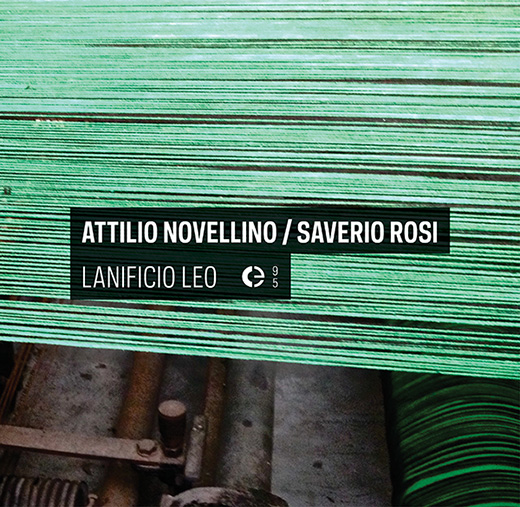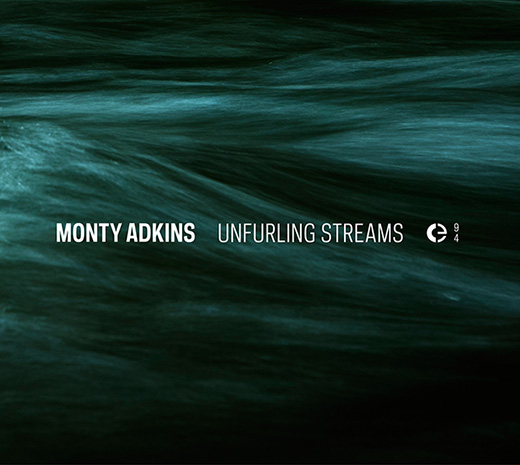
New podcast: LuÃs Antero

Live recording of LuÃs Antero’s performance at Natal dos Experimentais 2013, December 13 at Passos Manuel, Porto. Performance with manipulated field recordings of the watch and bell of the “Torre da Paz” (tower of peace) at the village of Benfeita (Arganil) and with the millstone of the water mill of São Gião (Oliveira do Hospital).
“Unfurling Streams†reviewed by Ambient Blog

If you check the back catalogue of Monty Adkins (which I definitely think you should), you’ll find that he often chooses a single instrument to work with and then starts exploring its possibilities and manipulating its sounds. And while the starting point and sounds are very different to begin with, he manages to create a ‘sound-field’ that is immediately recognisable. Check, for examples, the cello sounds of “Borderlands“, or the clarinet playing on “Four Shibusa“.
“Unfurling Streams“, his recent release on Crónica, is based on recordings of percussion instruments made by Jonny Axelsson (a much praised percussionist with impressive experience in playing contemporary music by composers like Stockhausen, Ligeti and Kevin Volans) and Monty Adkins himself.
The inspiration for “Unfurling Streams†comes from the last two lines of “maggie and milly and molly and may†by E.E. Cummings – who (according to the notes on poets.org) “abandoned traditional techniques and structures to create a new, highly idioyncratic means of poetic expressionâ€:
maggie and milly and molly and may
went down to the beach (to play one day)and maggie discovered a shell that sang
so sweetly she couldn’t remember her troubles, andmilly befriended a stranded star
whose rays five languid fingers were;and molly was chased by a horrible thing
which raced sideways while blowing bubbles: andmay came home with a smooth round stone
as small as a world and as large as alone.For whatever we lose (like a you or a me)
it’s always ourselves we find in the sea
“In Unfurling Streams, the ‘stream’ reflects life—something continually flowing, evolving, and changing.
Eddies, currents, pools and spray also are suggestive of ways in which the stream makes its way through the landscape and are clearly reflected in the images and sounds created for this project.â€
It’s fascinating to hear how the variety of sounds from the percussion instruments – from sub-low rumble to high-pitched metallic – resemble a stream of water finding its way.
With the way he post-processes this material, Monty Adkins creates his characteristic “slow shifting organic texturesâ€. However different the original sound sources are, it is this delicate texture that links the album to its predecessors “Borderlands†and “Four Shibusa†– like a sonic trilogy.
via Ambient Blog
Tonight, Monty Adkins’s “Unfurling Streams†featured at RAI3

An interview with Monty Adkins at 22h30 GMT (23h30 CET) will be followed by a presentation of the new CD “Unfurling Streamsâ€. You can follow it live today, from 22h30 GMT at RAI3.
Alexander Rishaug reviewed by RNE 3 Atmosfera

El Segundo trabajo que escuchamos esta noche es uno de esos contenidos impactantes y densos del que os hemos preparado un montaje para que podáis apreciar en unos pocos minutos todo el desarrollo y la envergadura del proyecto de Alexander Rishaug.
El músico experimental y artista sonoro noruego Alexander Rishaug acaba de entregar su quinto álbum en solitario Ma.Org Pa.Git en el que explora el espacio, la acústica y la mecánica de un órgano de iglesia y el siseo, los matices y la retroalimentación de un viejo amplificador de válvulas y la guitarra eléctrica.
El álbum consta de dos piezas de larga de duración que se registraron en la Iglesia de los marineros noruegos de Rotterdam en enero de 2012. Estas piezas fueron editadas, mezcladas y procesadas digitalmente en Brugata y en el estudio oran / zen de BerlÃn.
A pesar de que el material está muy procesado y recompuesto, la sensación general es realmente espaciosa y acústica, algo que no es nada fácil de conseguir.
“Unfurling Streams†reviewed by Rockerilla

Il compositore inglese Monty Adkins continua a pubblicare dischi meravigliosi. Unfurling Streams si nutre degli stessi riflessi accecanti e delle stesse lunghezze d’onda degli imperdibili Four Shibusa (Audiobulb, 2012) e Borderlands (Audiobulb, 2015). Sei lunghe tracce senza titolo costruite sui suoni di percussioni registrate dallo stesso Adkins insieme all’amico Jonny Axelsson. Riverberi di armonici legati insieme in un bagno di frequenze che accende percorsi neurali immaginifici. Sotto questa volta di frequenze inarrivabili un tappeto elettronico si increspa delicatamente come oscure e inquietanti onde del mare sotto un cielo stellato. Roberto Mandolini
Ran Slavin at Sounds of a Tired City
Futurónica 137

Episode 137 of Futurónica, a broadcast in Rádio Manobras (91.5 MHz in Porto, 18h30) and Rádio Zero (21h GMT, repeating on Tuesday at 01h) airs tomorrow, April 3rd.
The playlist of Futurónica 137 is:
- Monty Adkins, ufs_1 (2015, Unfurling Streams, Crónica)
- Monty Adkins, ufs_2 (2015, Unfurling Streams, Crónica)
- Monty Adkins, ufs_3 (2015, Unfurling Streams, Crónica)
- Monty Adkins, ufs_5 (2015, Unfurling Streams, Crónica)
- Monty Adkins, ufs_6 (2015, Unfurling Streams, Crónica)
- Monty Adkins, Residual Forms (2014, Residual Forms, Crónica)
You can follow Rádio Zero’s broadcasts at radiozero.pt/ouvir and Rádio Manobras at radiomanobras.pt.
“Ma·Org Pa·Git Re·Mx†reviewed by Nordische Musik

Ein Dialog entsteht wiederum durch das nur als Download erhältliche Zusatzalbum »MA.ORG PA.GIT RE.MX«, für das Rishaug elf von ihm bewunderte, internationale Musiker mit Remixen der beiden Stücke beauftragte. So entstanden teils vollkommen andere, reizvolle Electronica-Arbeiten, vorrangig minimalistischer Natur, versteht sich. Empfehlenswert etwa die melodiöse DubTechno-Fantasie von Svalastog oder der zugleich nervöse wie schwebende Retrofuturismus von Phonophani.
Toll auch, wie bei Seaworthy der Gitarrensound zum eingesperrten und immer weiter gefilterten Surren wird und bald im industriellen Serverraum-Dröhnen versandet — oder sich bei Asuna zum zehnminütigen, feingliedrigen Noiseberg auftürmt. Eine rundum gelungene Sache, wobei man sich über Mark Fells 90-minütigen Extrem-Remix zwar durchaus streiten kann, doch das kreative Niveau aller Mitwirkender ist wohl unbestritten. Mit über zweieinhalb Stunden ist dieses Remixalbum rund sechs Mal so lang wie das Original. (ijb)
via Nordische Muzik
“Ma·Org Pa·Git†reviewed by Nordische Musik

Lange in der Mache war Alexander Rishaugs Nachfolger des exzellenten »Shadow of Events«. Noch minimalistischer, noch offener, mehr Ambient und Field Recordings und alles in allem weitaus experimenteller als unsere damalige »CD des Monats« ist das Ergebnis der bereits im Januar 2012 aufgenommenen zwei epischen Tracks. Dieses Werk erscheint gleich gar nicht mehr als CD, sondern vor allem als kleine Vinylauflage beim portugiesischen Klangkunst-Label Crónica.
Lassen sich die Stücke, die Rishaug mit leisem Humor in »Ma.Org« (»Mutter Orgel«) und »Pa.Git« (»Vater Gitarre«) aufteilt, problemlos als zeitgemäße Ambient-Kompositionen einordnen und genießen, so sind sie doch eigentlich als Klangforschung von (A) Raum und Hall einer Kirchenorgel und (B) Drone und Obertöne eines alten Röhrenverstärkers in Verbindung mit einer elektrischen Gitarre gemeint. Beides ist nur streckenweise herauszuhören, da größtenteils massiv verfremdet und neu collagiert — eben das macht letztlich den Reiz des Experiments aus. Dass der schwebende Orgelsound im Feedback einer Gitarre ein Gegenüber findet, ist so neu nun zwar nicht, anregend ist es gleichwohl. Doch vermisst man eigentlich einen dritten Track, der die beiden Elemente geschickt in einen direkten Dialog bringt. (ijb)
via Nordische Muzik
